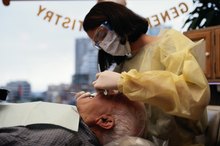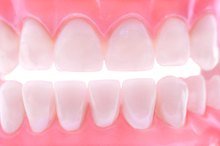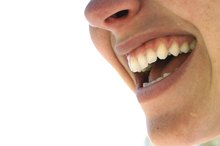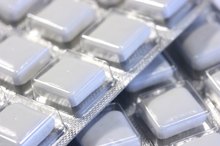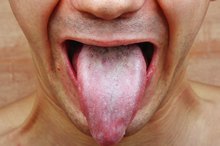Marijuana's Harmful Effects on the Mouth
About 8.1 million people in the United States use marijuana, also called cannabis, on a daily or almost daily basis, reports the 2013 National Survey on Drug Use and Health 1. Like tobacco, marijuana smoke contains high concentrations of many chemicals, and some of them are known cancer-causing substances. These chemicals put marijuana smokers at risk for many of the same mouth problems caused by tobacco smoking -- gum disease, dry mouth, tooth decay and oral cancer.
If you are experiencing serious medical symptoms, seek emergency treatment immediately.
Dry Mouth and Tooth Decay
Using marijuana -- whether smoked or ingested -- reduces the amount of saliva produced in the mouth due to its effects on the nervous system. With frequent use, this effect can result in an uncomfortable condition called dry mouth, or xerostomia. Without sufficient saliva to wash away food and bacteria from the teeth and gums, xerostomia can cause bad breath and mouth sores. Additionally, a dry mouth promotes tooth decay and possible tooth loss if the decay is not treated promptly.
- Using marijuana -- whether smoked or ingested -- reduces the amount of saliva produced in the mouth due to its effects on the nervous system.
- Without sufficient saliva to wash away food and bacteria from the teeth and gums, xerostomia can cause bad breath and mouth sores.
Gum Disease
What Causes the Mouth to Look Sunken As We Age?
Learn More
Like tobacco smokers, marijuana smokers may be at risk for developing gum disease -- also known as periodontal disease. Gum disease occurs when oral bacteria are allowed to flourish in the mouth, causing inflammation of the gum tissue and bone that surrounds the teeth. Without treatment, gum disease can lead to tooth loss. Having a dry mouth due to smoking marijuana also contributes to the development of periodontal disease.
- Like tobacco smokers, marijuana smokers may be at risk for developing gum disease -- also known as periodontal disease.
- Without treatment, gum disease can lead to tooth loss.
Oral Cancer
Both tobacco and marijuana smoke contain cancer-causing chemicals, including aromatic hydrocarbons, benzopyrene and nitrosamines. Marijuana users, who frequently smoke marijuana over long periods of time, have an increased risk of developing oral cancer, according to a study published in the January 2014 issue of "Cancer Epidemiology, Biomarkers and Prevention." The high temperatures of marijuana smoke when cannabis is smoked directly might irritate the oral tissues and trigger cellular changes -- potentially leading to the development of precancerous lesions in the mouth. Combined use of tobacco and marijuana may further increase the risk of oral cancer because tobacco use is a strong risk factor for this disease.
- Both tobacco and marijuana smoke contain cancer-causing chemicals, including aromatic hydrocarbons, benzopyrene and nitrosamines.
- Marijuana users, who frequently smoke marijuana over long periods of time, have an increased risk of developing oral cancer, according to a study published in the January 2014 issue of "Cancer Epidemiology, Biomarkers and Prevention."
Avoiding and Treating Problems
Vaseline Lip Therapy on a Cold Sore
Learn More
Good oral hygiene, such as brushing with fluoride toothpaste and flossing daily, along with regular dental visits may help minimize oral complications associated with smoking marijuana. During routine checkups, dentists screen for oral cancer, check for tooth decay and gum disease, and can make suggestions on how to contend with dry mouth. Seeing a dentist promptly at the first sign of a problem can keep small problems from becoming serious complications.
Related Articles
References
- Substance Abuse and Mental Health Services Administration: Results From the 2013 National Survey on Drug Use and Health: Summary of National Findings
- Australian Dental Journal: General and Oral Health Implications of Cannabis Use
- RDH Magazine: Marijuana
- Marijuana and Medicine: Assessing the Science Base; Janet E. Joy et al.
- Dimensions of Dental Hygiene: Cannabis Use and Xerostomia
- JAMA: Cannabis Smoking and Periodontal Disease Among Young Adults
- Health Canada: Information for Health Care Professionals Cannabis (Marihuana, Marijuana) and the Cannabinoids
- Cancer Epidemiology, Biomarkers & Prevention: Association of Marijuana Smoking With Oropharyngeal and Oral Tongue Cancers: Pooled Analysis From the INHANCE Consortium
- California Environmental Protection Agency: Evidence on the Carcinogenicity of Marijuana Smoke
- National Cancer Institute: Cannabis and Cannabinoids
- National Institute on Drug Abuse. Most Commonly Used Addictive Drugs.
- National Institute on Drug Abuse. Marijuana.
- Noble MJ, Hedberg K, Hendrickson RG. Acute cannabis toxicity. Clin Toxicol (Phila). 2019;57(8):735-742. doi:10.1080/15563650.2018.1548708
- Goyal H, Awad HH, Ghali JK. Role of cannabis in cardiovascular disorders. J Thorac Dis. 2017;9(7):2079–2092. doi:10.21037/jtd.2017.06.104
- Sophocleous A, Robertson R, Ferreira NB, Mckenzie J, Fraser WD, Ralston SH. Heavy Cannabis Use Is Associated With Low Bone Mineral Density and an Increased Risk of Fractures. Am J Med. 2017;130(2):214-221. doi:10.1016/j.amjmed.2016.07.034
- Bourne D, Plinke W, Hooker ER, Nielson CM. Cannabis use and bone mineral density: NHANES 2007-2010. Arch Osteoporos. 2017;12(1):29. doi:10.1007/s11657-017-0320-9
- Tashkin DP, Roth MD. Pulmonary effects of inhaled cannabis smoke. Am J Drug Alcohol Abuse. 2019;:1-14. doi:10.1080/00952990.2019.1627366
- Huang YH, Zhang ZF, Tashkin DP, Feng B, Straif K, Hashibe M. An epidemiologic review of marijuana and cancer: an update. Cancer Epidemiol Biomarkers Prev. 2015;24(1):15–31. doi:10.1158/1055-9965.EPI-14-1026
- Hasin DS. US Epidemiology of Cannabis Use and Associated Problems. Neuropsychopharmacology. 2018;43(1):195–212. doi:10.1038/npp.2017.198
Writer Bio
Donna Pleis has been writing dental and health-related articles since 1991 when she began writing for a national publication called the “The Doctor’s Press.” She worked 18 years as a dental hygienist and many years in the insurance industry. Her education includes the University of Pittsburgh for dental hygiene and St. Joseph College for a degree in business administration.
